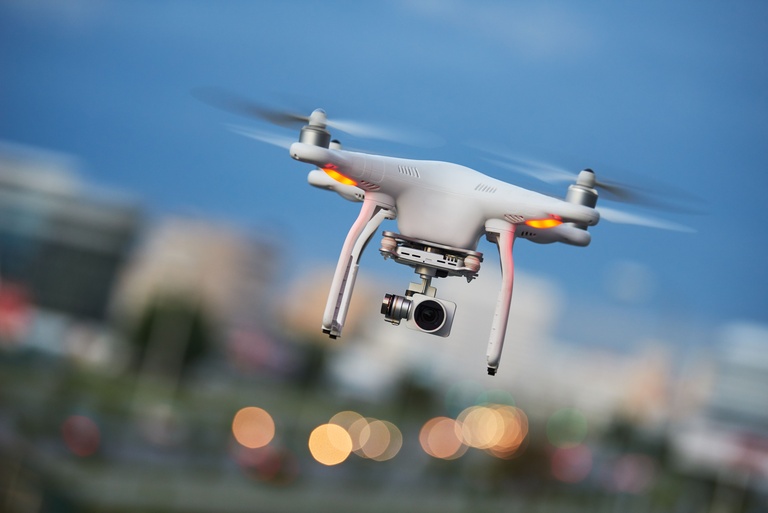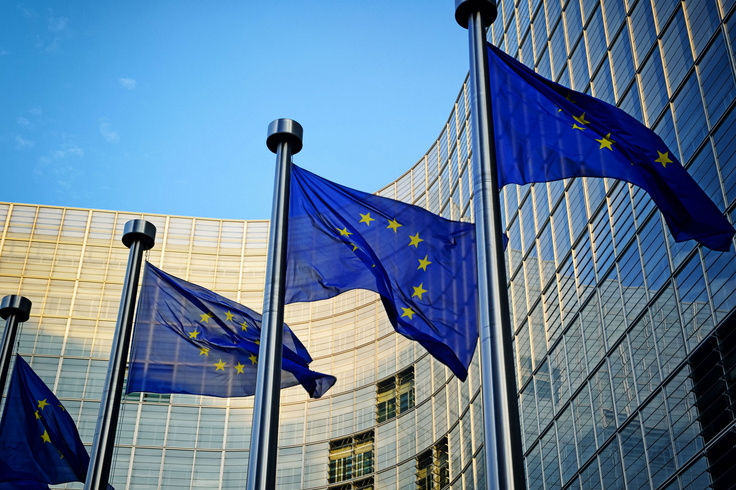![[Translate to English:]](/fileadmin/_processed_/b/c/csm_J.Rolfes.Kapellmann191002BX.105_24df4f8a89.jpeg)
Adoption of the new Dual-Use Regulation is imminent
27. January 2021

Extensive review of Council Regulation (EC) No 428/2009 (the Dual-Use Regulation)
The Dual-Use Regulation of the European Union establishes a legal framework for the control of exports of so-called dual-use items, which are defined as items including software and technology that can be used for both civilian and military purposes. The Regulation is binding on all 27 Member States and must be applied uniformly by their national authorities.
For some time now, the EU has been preparing to modernize its legal framework for the control of exports, brokering, technical assistance, transit and transfer of dual-use items. Already in 2016, the Commission proposed a revised Dual-Use Regulation. As these strategic items are capable of serving both civilian and military purposes, it is vital to adapt the provisions of the Regulation to the continuous technological, economic and political developments that shape this field.
The main objective for the EU is therefore to update and extend the existing rules laid down in the Dual-Use Regulation currently in force, which dates back to 2009, by making trade in dual-use items more accountable, competitive and transparent. As part of the ongoing review of the Regulation, Annex I has already been updated by the Commission’s Delegated Regulation (EU) 2020/1749 of 7 October 2020, which entered into force on 15 December 2020 (for an overview of the implemented changes, please follow this link).
After an extensive review of the Regulation, the provisional agreement on the final text of the new Dual-Use Regulation was finally reached on 09 November 2020. It will now be subject to the normal legislative procedure. It is expected that the new Regulation will be published in spring 2021. Although a political agreement has been reached on the final text of the new Regulation, its content and the changes described below may still be modified during the legislative procedure. We will update you on our blog once the final Regulation has been adopted.
Key amendments to the Dual-Use Regulation
The Commission’s proposal introduces important changes and clarifications to the Dual-Use Regulation including:
Stricter control of cyber-surveillance items
First, the new Regulation puts more emphasis on human rights protection and addresses the issue of the possible dual-use character of cyber-surveillance items that may potentially be used for internal repression and for serious human rights violations. Since stricter control of exports of such cyber-surveillance items is deemed necessary, the new rules introduce a special authorization requirement for those items:
Non-listed cyber-surveillance items must also be subject to export control, especially where those items can be used to allow intrusion or so-called “deep packet inspection” aimed at enabling covert surveillance of individuals in the form of observing, collecting, gathering and analysing data from information and telecommunication systems.
The new Regulation introduces an authorization procedure for the export of non-listed cyber-surveillance items where the due diligence carried out by the exporter indicates that these items are or may be used, in whole or in part, for internal repression or for the violation of human rights. The provisions impose an obligation on an exporter who has such a suspicion to notify the competent authority, which will then decide whether to make this transaction subject to the authorisation procedure. The use of this procedure should be communicated to the respective customs administration, the other Member States, and the Commission, with details of the items and entities involved.
However, in order to prevent any unnecessary practical burden, the new rules also indicate that cyber-surveillance items that serve purely commercial purposes, e.g. billing, assessing service quality or customer satisfaction, do not pose risks.
Further, to meet the purpose of harmonization of the control of non-listed cyber-surveillance items between the Member States, the new Regulation also requires enhanced transparency and information exchange between the Member States, especially on the technological development of those items.
New transmission channels
The new rules for the export control of dual-use items will also apply to exporters who transmit software or technologies via electronic channels or make them available in an electronic form to a recipient outside the EU.
Concerning the transmission of software or technology, the new Regulation covers the making of such software or technology available in an electronic form as well as through oral transmission (description of technology through a voice transmission tool).
The scope of technical assistance, which is also subject to export control for dual-use items, will now cover assistance granted by electronic means and by telephone. Furthermore, authorizations for technical assistance must indicate the end-user of the service and its exact location. However, any operations which constitute the minimum necessary for the installation, operation or maintenance of authorized items will not be subject to additional authorization. The new Regulation also foresees other exemptions being introduced for technical assistance in order for the system to remain practical.
Large project authorization
The new rules for dual-use items clarify that so-called “large project authorization” refers to the individual authorization of large-scale projects with a validity of four years, which can be extended where this is justified by the duration of the project.
Enhanced cooperation and transparency between Member States
The new Regulation aims at enhancing transparency and exchange of information between the Member States, as well as aligning those provisions which implement the international obligations and commitments of the EU and its Member States.
The new rules foster harmonization of the implementation of the Dual-Use Regulation, for example, through EU-wide licenses or unified interpretation for certain types of transmission of dual-use software or technology, for example, to a cloud. The new rules should bring better coordination and cooperation and enhanced exchange of information at the EU-level as well as between licensing and customs authorities.
Once the Regulation comes into force, the Commission intends to provide best practice guidelines for relevant stakeholders on the application of transaction controls for dual-use items.
Practical effect
The practical effect of the new Dual-use Regulation is still to be evaluated: on the one hand, the revision will bring more clarity and transparency in the application of EU export rules. In that regard, the creation of precise definitions and obligations as well as harmonization with existing rules at the national level will certainly be of benefit for the competitiveness of European companies at the global level. In Germany, by way of example, controls on the export of surveillance technologies had already been introduced in the German Foreign Trade and Payments Ordinance (Außenwirtschaftsverordnung) in July 2015. The same holds true for revised provisions relating to technology transfer in order to provide greater clarity with regard to the application of controls on software and technology. For example, in the past, confusion had arisen over how controls were supposed to apply when technology was stored and shared via cloud computing.
On the other hand, the incorporation of human rights considerations raises concerns, in particular in the technology industry, as this may create a competitive disadvantage vis-à-vis non-European competitors. Indeed, the Commission’s proposal to expand the catch-all provision to address human rights considerations could lead to a greater administrative burden for operators and authorities, at both national and EU levels, since a new layer of control would be added to the export of such items. In particular, in the initial period following the coming into force of the new rules, this might lead to additional and perhaps longer licensing procedures due to the lack of experience in implementing the provisions. It is therefore crucial that the Commission issues the promised best practice guidelines in a timely manner. For Germany, such guidelines are already available – please see BAFA’s Information Leaflet on Internal Compliance Programmes (ICP) “Merkblatt des BAFA zur Firmeninternen Exportkontrolle”.
It is therefore of utmost importance for exporters to implement internal procedures and strategies prior to the coming into force of the new Dual-use Regulation. Only then will it be possible for exporters to tackle any new challenges and address any possible complications as they arise.
We would be delighted to assist you with this task and any related issues.




